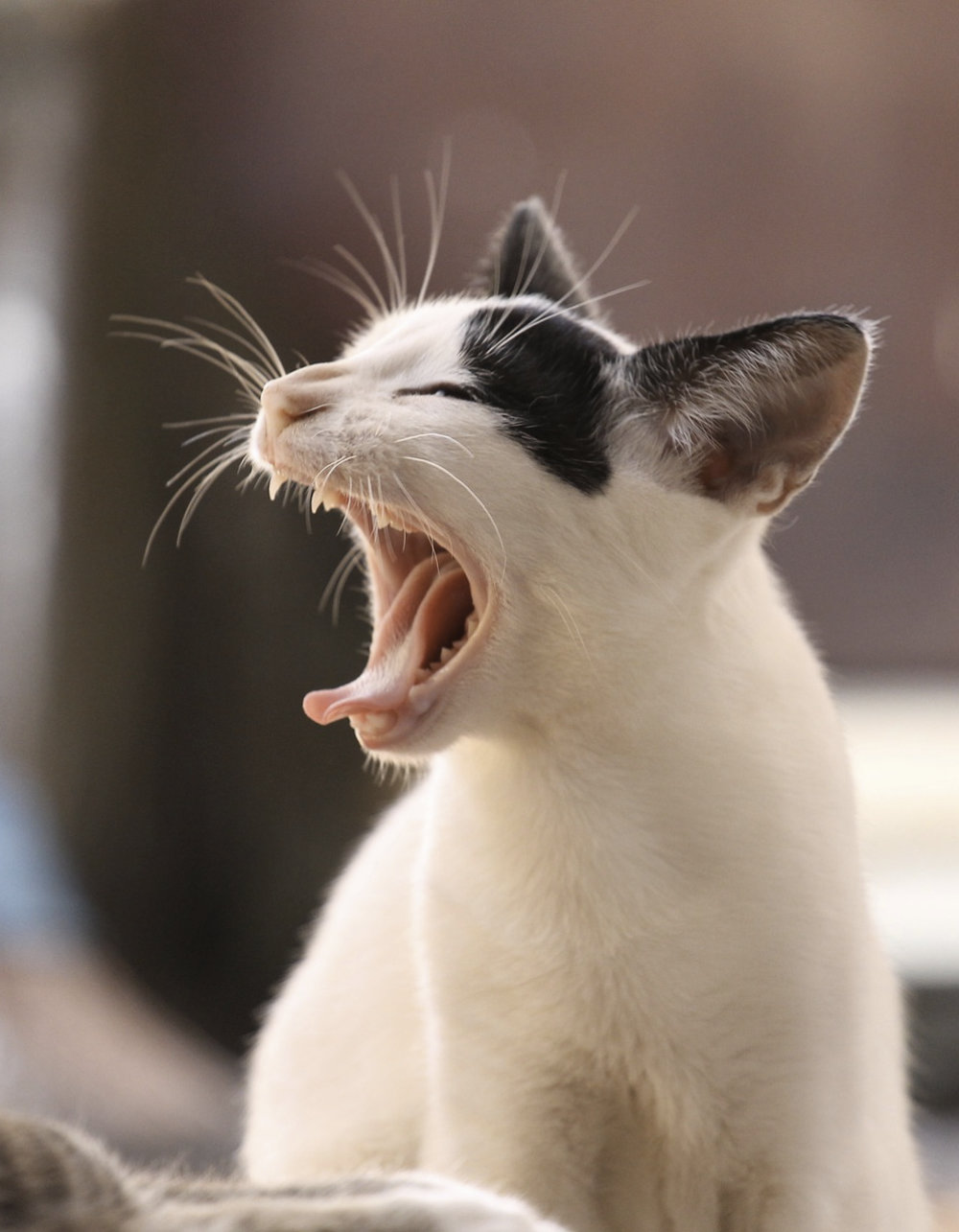
05 Jul Feline Juvenile Gingivitis
Many factors may contribute to the development of oral inflammation in the cat, including diet, oral conformation, immune-mediated diseases, infectious diseases, and specific breed characteristics. Oral inflammatory conditions have been described in the immature feline, including feline juvenile gingivitis, juvenile-onset periodontitis, stomatitis, tooth resorption, or a combination.
Feline juvenile gingivitis is a pronounced generalized inflammation of the gingival tissues in the young cat. Certain breeds are over-represented including Maine Coons and Siamese. It is typically diagnosed between 7-10 months of age. This juvenile form of gingivitis may represent exaggerated tooth eruption inflammation, viral exposure (FeLV, FIV, Calici), immune-mediated disorders, or a multifactorial response. Some have speculated about a “temporal trigger” (perhaps persistent deciduous teeth) for gingivitis. It is distinguished from other oral inflammatory disorders in that the generalized gingivitis has not radiated to the mucosa or caudal oral tissues as in stomatitis. Typically, periodontitis changes, including alveolar bone loss, gingival resorption, pocket formation, and/or root exposure, are not seen. In many such cases if the oral inflammation can be controlled and kept controlled for the first 2 years of life, recurrence may be decreased or prevented altogether. At this age these patients often mature into a more normal state. On the other hand, juvenile cats with this form of oral inflammation who are not controlled aggressively at a young age suffer permanent anatomical changes and frequently progress to severe periodontitis or even stomatitis.
Patients with these symptoms require detailed oral and dental assessment under anesthesia with dental radiography. Meticulous dental cleaning should be performed even though minimal plaque is usually present. In applicable cases, extraction of persistent deciduous teeth may be necessary. Young cats with a hyperplastic response require gingivectomy to remove pseudopockets and create an environment more amenable to plaque control. A biopsy of excised tissue should be considered. Some advocate PCR testing for Calicivirus, performed from a piece of gingiva or from a cytobrush swab. Diligent home plaque control will greatly influence outcome. The home care must be tailored to the individual patient based on the influences of the owner, animal, and environment. Tooth brushing is considered the gold standard of care, but may be too uncomfortable for many of these patients at least until early control is achieved. Other options include dental formulated diets, chlorhexidine rinses and gels, barrier sealants, dental treats, and water additives. The individual’s response to initial professional treatment is a good prognostic indicator. If a cat shows significant reduction in gingival inflammation, the chances of eventual full recovery are improved. Many patients enter remission by the second dental cleaning visit. Repeated professional dental cleaning visits may be required every 3 months until adulthood is reached (18-24 mos). If owners cannot provide home care, maintenance cleaning visits may be required as frequently as every 4 weeks until remission is achieved. Once the individual reaches maturity, a more normal state may be achieved and less frequent professional visits are required. If aggressive attempts to control gingivitis are unsuccessful, long-term prognosis is guarded and extraction of teeth may need to be considered.
Most of these patients also benefit from concurrent incorporation of immunomodulation as well as the recommended professional and home plaque control. The author has experienced success using feline interferon omega, low dose daily doxycycline, and more recently topical application of TetraDecanol Complex (TDC).
Another oral inflammatory condition seen in young cats is Feline juvenile periodontitis. This syndrome is differentiated from feline juvenile gingivitis by the presence of periodontal attachment loss. Dental radiographs will demonstrate alveolar bone loss. Other anatomic changes are common, including gingival dehiscence, periodontal pocketing, and furcation exposure. Juvenile periodontitis starts in cats less than 9-months of age. Certain pure breeds seem predisposed (e.g. Siamese, Abyssinian, Burmese, Himalayan, Persian) but any cat could be affected. There is usually abundant dental plaque and calculus. This syndrome is approached in similar fashion as feline juvenile gingivitis, with the exception that extractions are frequently necessary. Teeth with bone loss, root exposure, etc that are more plaque-retentive should be removed to create a healthier oral environment and improve the prognosis for salvage of other teeth. Like cats affected with juvenile gingivitis, many of these cats go into remission fairly quickly, but require more frequent professional cleaning visits than the average cat. The response to initial professional care can help determine long-term prognosis. Uncontrolled juvenile periodontitis will likely progress to adult periodontitis or stomatitis, requiring full-mouth or near full-mouth extractions.
The treatment approach elected depends on many factors including the severity of inflammation, the commitment of the pet owner to oral care, the pet owner’s expectations (do they want the quickest resolution; are they more inclined to “be done with it” or do they want to save teeth). Cost will depend on the approach taken: Will it be diagnostics and cleaning with strategic extractions? Or will it be full mouth extractions right from the onset? At Apex, oral surgery cost is time-based just like other surgeries.
Ideally these patients receive professional care +/- surgery before they are critical, and most will eat readily after surgery if appropriate pain management is provided (e.g. combination of opioids, NSAIDs, longer acting local nerve blocks, and perhaps gaba-pentin). For a more critical patient or one experiencing a hunger strike, pre-placement of a feeding tube prior to oral surgery should be considered. A feeding tube ensures better caloric intake prior to the big surgery day and the mouth seems to calm down when it is “by passed”. In some instances, antibiotics may be started a week prior to surgery in order to achieve healthier gingival tissues, which makes for easier flap creation and closure.
For both juvenile gingivitis and periodontitis patients, post-professional treatment care should include home plaque control, repeated professional visits, immunomodulation, +/- antibiotics, and analgesic medication as needed.



